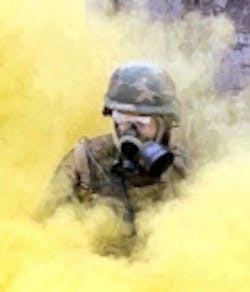European flight simulator designers blend robotics and practice cockpits to cut costs of full-motion simulation
FARNBOROUGH, England, 17 July 2010. European flight simulator designers are creating cost-effective full-motion flight simulators for helicopter pilots by using a heavy-duty industrial robot to provide motion to the simulator's cockpit.
Simulation and training experts from helicopter services and training company Heli Aviation GmbH in Wallerstein, Germany; the Max Planck Institute for Biological Cybernetics in Tübingen Germany; and industrial robot specialist KUKA in Augsburg, Germany, are designing a helicopter flight simulator called the Heli Trainer that uses a KUKA robot to move the simulator's cockpit as it emulates the motion of flight.
The Heli Trainer uses a cockpit from a Guimbal Cabri G2 two-seat light piston-engined helicopter designed by Bruno Guimbal, a former Eurocopter engineer. The Cabri G2 cockpit is attached to a KUKA 1,100-pound-payload, six-axis robot that is certified to carry passengers. This industrial robot is the same type used for the Robocoaster, a robot fitted with rollercoaster-style seats. A linear traversing axis can be added to simulate landing and takeoff exercises.
The KUKA Aerospace Group will display its automation solutions for the aerospace industry at the Farnborough International Airshow July 19 to 25 in Farnborough, England.
The Heli Trainer enables trainees not only to use less time to develop a feel for movements and better understand the consequences of their flight control actions, but also to perform maneuvers in a safe environment with a steep learning curve, KUKA officials say.
âWhat makes the Heli Trainer unique is its ability to reproduce the movements of complex real systems in the smallest of spaces so that the pilot thinks he is in a real aircraft,â says Gary Taylor, KUKAâs United Kingdom aerospace manager.
For more information contact Heli Aviation online at www.heli-trainer.de, KUKA at www.kuka.com, or the Max Planck Institute for Biological Cybernetics at www.kyb.mpg.de.
